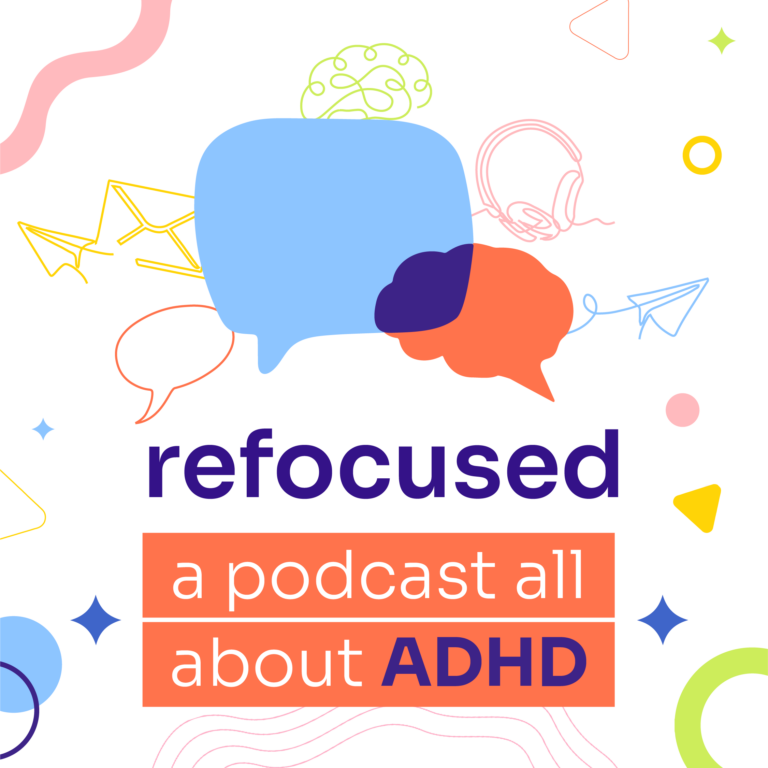
By Michelle Seitzer
Ah, summer. Time for relaxing by the pool, hitting the beach and eating ice cream for every meal. Unless you’re a parent. Then it looks more like keeping the kids from saying “I’m bored!” every five minutes and asking to have ice cream for every meal.
Parents: If the summer you dream of isn’t the reality you experience each day, join the club. And if you’re the parent of a child with ADHD, forget the dream. You’re just trying to survive!
That’s why we’ve gathered tips from parents and experts so you can actually enjoy this season with your kids – and they will never have to say those dreaded words: “I’m bored!” (But if they do, check out our post, Summer Boredom Busters for the Busy ADHD Brain and Body.)
Establish a Summer Routine
Rachel Fink, founder and CEO of Parenting Pod and mom of seven, struggles with ADHD, as do some of her kids.
“Summertime can indeed become a nightmare if you have children with ADHD,” Fink says. “The lack of routine and structure can heighten the symptoms, causing not only overstimulation but an increase in ‘misbehavior’ and chaos,” says Fink.
Fink’s most important piece of advice is to establish a new routine and structure that fits your family’s summer schedule. “It will have to be more flexible, to account for different summer activities, parties and trips,” she says. But you should aim to have a set timetable, and Fink recommends the following:
- Have a strict morning routine. Get up at the same time, have breakfast together, get ready for the day.
- Aim towards the same bedtime every day. Having a time limit on the latest your children are allowed to go to bed can help with this.
- Have set activities that the kids go to every day or the same day every week. This can be a sports activity, a day camp, summer classes or similar activities.
- Make sure there are quiet moments throughout the day or a quiet space where the kids can go when feeling overstimulated and overwhelmed. But instead of “time out” sessions, where parents force kids into a corner of a room, staring at a wall, consider alternatives. For example, create a “quiet time corner,” where a child can go and do
their own thing. Design this like a special corner with pillows and
their favorite blanket. Put some child appropriate items
there — crayons, play dough, puzzles or similar items. And let them calm themselves
down, at their own pace.
Get to Know Your Child
While routine and structure is good for many kids with ADHD, it’s not the only way to survive summer. In fact, Franki Bagdade, a limited licensed social worker who guides parent clients through her private practice, Franki Bagdade Therapy, has found that some kids enjoy the “free flow of summer,” where they have the opportunity to ride bikes and be physical for hours, or hunker down in hyperfocus mode and build their latest LEGO model.
“This is why getting to know your child is key,” she says. In addition to working with kids, teens and adults with ADHD for over two decades, Bagdade is a mom of three, so she’s discovered what works — and what doesn’t — in a variety of settings.
As the clinic director and founder of Wellness North Counselling, Aditi Jasra supports children, youth and adults struggling with ADHD. She’s also the parent of a nine-year-old with ADHD, so she understands the issues. And she agrees that knowing where your child is coming from and why summertime is a struggle helps you better support and motivate them.
“Remember and remind yourself that a child/person with ADHD is not lazy or willfully disrespectful,” she says. The inability to regulate their brain activity and the trouble shifting attention from one task to the other means that transitions can be difficult, Jasra says.
“The key thing is that you know your ADHDer best, so work with them rather than against them,” she says.
Set some ground rules, do some collaborative problem solving and put these plans in writing or as a contract so the guideline is easily accessible, she says. And have your kids determine what reward to work towards when things are going well, she adds.
Plan, Prepare and Practice
When you’re planning an outing, prepare ahead of time, says Jennifer Milstead, a teacher and parent of three. “Saying ‘we’re leaving in 10 minutes and you need to do these 10 things first,’ won’t work,” she says. Instead, create a checklist kids can follow, and include visuals if your child isn’t reading independently yet. A pool checklist might include goggles, a water bottle, snacks, pool toys, a towel, and dry clothes to change into afterwards.
If impulsivity is a struggle, set clear expectations before any outings. “And give lots of praise when it’s a good day,” says Milstead.
Jasra also believes in preparedness and would add another layer to it: practice.
“So if the plan is to go to grandma’s house four hours away, then decide beforehand what happens after one hour, after two hours and so forth,” says Jasra. “Will there be body breaks? Snack breaks? Make time to explore that farmers market or look at those barn animals, then go over the plan multiple times,” she says. “And leave some wiggle room for unforeseen circumstances.”
Another tip from Jasra: If your child loves swimming but tends to get overstimulated by crowds of people, head to the pool when it’s least likely to be busy.
Keep Them Moving
Milstead has experience in the classroom and at home, and she recommends activities that incorporate movement and hands-on engagement. So if you’re thinking about a museum trip for a rainy day, make sure it’s interactive.
Avoid long stretches of sitting, unless the child will be highly engaged. For example, a kid with ADHD who loves LEGOs can do LEGOs for hours on end, she says.
Create An Exit Strategy
Attorney, author and TEDx speaker Gabrielle Hartley is an expert in skillful conflict resolution. As the mom of two teenagers with ADHD, she’s also an expert in summer survival.
One of her top tips? Create a clear exit strategy, which should be established and communicated before a day trip to the beach or a pool party, for example.
“Know your kids’ limits and leave wherever you are before they hit the wall,” Hartley says.
In addition to creating an exit strategy, establish clear boundaries for behavior with concrete consequences, Hartley recommends. “For instance, if your kid is tossing sand in the direction of other kids because they’re overstimulated, they need to sit on a towel or chair for a half hour until they’ve calmed down.”
Pack Your Patience
Despite the best of plans, the most important thing to pack for your summer days is flexibility and patience, says Bagdade.
“Heat and unusual routines can make anyone cranky,” Bagdade says. “I find if my reaction to my children’s frustration-related behaviors — meltdowns or whining — is calm and collected, the behaviors have a much better chance of resolving themselves so we can move on and enjoy the rest of the day!”






